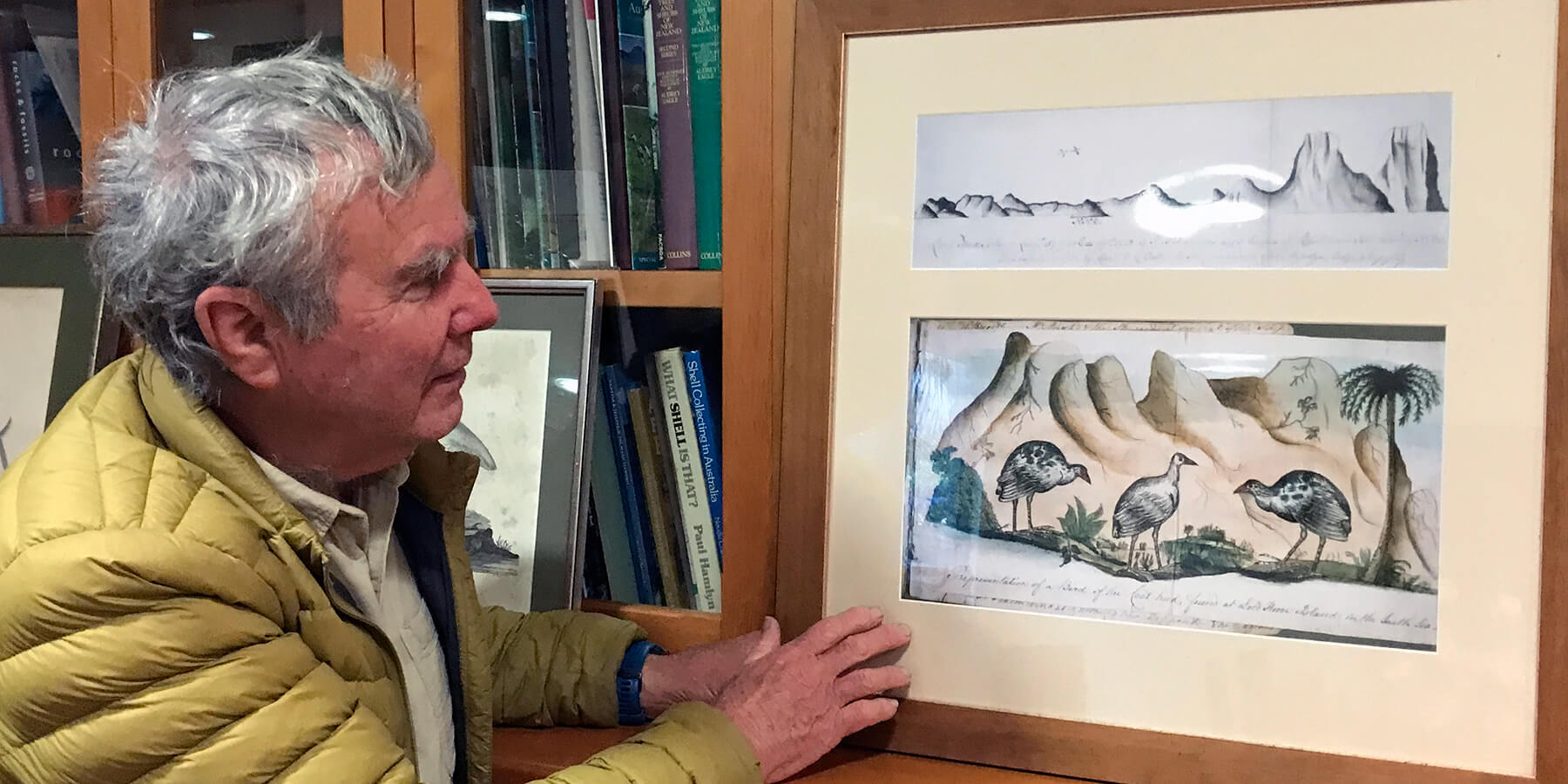As Curator of the museum, I get a lot of requests via email: people wanting to know about a relative’s visit in the past, the story of a yacht’s visit, a bone they found on the beach; or maybe people wanting to donate photos or a collectible object.
In May of this year I had an unusual email – a journalist from New Zealand, Alex Casey, sent me a message asking if I thought that a photo of a stuffed white bird seen in an antique shop in Waipū, in the Northland of New Zealand, was the long-extinct flightless White gallinule of Lord Howe Island.
My eyes opened wide, my heart raced… what if this really was a White gallinule? It would be a priceless asset to have at our museum.
The White gallinule is thought to have been shot into extinction by visiting sailors by 1800 and there are only two skins of this bird known in the world: one in the World Museum, Liverpool (in the UK), and the other in the Vienna Natural History Museum, in Austria.
A number of artists’ drawings of the bird are known, and the museum holds several rare original prints of these dating back to 1790.
My mind went into overdrive… should I get on a plane immediately and fly to New Zealand and go to track it down? Should I try to find the shop and make an offer over the phone?
After my initial excitement quietened down, I began to think rationally. The specimen looked in too good condition to have been 220 years old; and just how likely would it be that one ended up in New Zealand, and taxidermised? I knew that the first settlers to the island who came in 1834, were from New Zealand, and returned about 1840. They could have taken a skin back with them, but this was highly unlikely, as by all accounts the bird was extinct by the time they arrived.
I googled White Pūkeko – and up came several recent rare accounts of white forms of Pūkekos being seen on farmland in New Zealand.
I re-read a science paper of 2016 which contained a table detailing the sizes and descriptions of the only two skins known of our Lord Howe Island White gallinule, and those of the Australian Purple Swamphen and the New Zealand Pūkeko.
Looking at the photos of the stuffed specimen in New Zealand, it seemed to me that the wings were too long, and the legs and feet too large. I felt sure it was not a White gallinule.
I phoned the journalist, and interviewed her, and then contacted the shop owner to ascertain a price. Three days later I was informed it had been sold.
I was disappointed – while it was not actually a Lord Howe Island White gallinule, it would have been a nice exhibit to go in our early history gallery with a story and the old 1790 prints we hold of this bird.
An ornithological colleague in the UK, Julian Hume, gave this thorough opinion on the specimen from New Zealand, as the last word:
As much as I would love it to be a Lord Howe Swamphen, this specimen is a Purple Swamphen exhibiting a 'dilution' colour aberration, displaying an all-over light grey plumage with normal bill, legs and feet as these still contain melanin. I would expect the eye to have been normal as well with a red iris and black pupil. Also, this bird is very much one that can fly as it has long wings, especially the sharp primaries, a long tail and typical swamphen legs and feet. In the Lord Howe bird, the wings are extremely short and primaries rounded, the tail is almost invisible and the legs and feet are shorter and much more robust.
Julian Hume
References
Casey, Alex 2022. The curious case of Waipū’s pale pūkeko. The Spinoff, June 9
The White Swamphen, Wikipedia
Lord Howe Island Extinct Birds Lord Howe Island Museum website
Photographs of the stuffed specimen in the antique shop in Waipū, New Zealand (Leucistic Birds New Zealand Facebook)
Two paintings of the Lord Howe White gallinule, from the 1790s, and photos of the specimens held in Vienna and Liverpool.
Banner picture, at top of page: Curator Ian Hutton examining a reproduction of a watercolour of White gallinules painted by Arthur Bowes Smyth (surgeon on Lady Penryn) in May 1788, probably from live specimens he saw on his visit.






